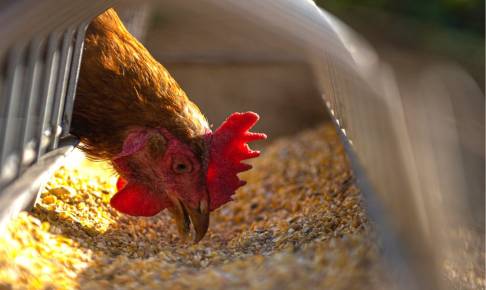Insects and their resistance to mycotoxins: a solution for mycotoxin-contaminated waste streams?
According to a comprehensive analysis conducted by experts from Wageningen University in the Netherlands, insects may break down complex mycotoxins and convert them into smaller less- or non-toxic metabolites.
Mycotoxin buildup in the insect body was discovered in few unique situations; nevertheless, the concentration in the insects found was typically below their respective maximum limits (MLs) or guideline values. In general, published data show that mycotoxin levels in insect larvae are below the corresponding LOD/LOQ, even when exposed to concentrations exceeding the European Commission ML for the presence of mycotoxins in food and related commodities, as well as advisory values provided for mycotoxins in feed. As a result, it can be concluded insects may provide a safer source of food for humans and animals.
Insects as food and feed have gotten a lot of attention in recent years, and there has been a lot of discussion about it. To date, published data on probable mycotoxin accumulation in insects, possible mycotoxin metabolization by insects, and possible data gaps are dispersed among fields, with no clear overview accessible. Some insect species seem to be tolerant to specific mycotoxins, and insects in general appear to be able to develop in plant-derived (waste) streams containing mycotoxins. According to the previous studies on insects and mycotoxins, when the initial mycotoxin concentration was compared to the concentration found in the remaining feed material and the larvae, it was discovered that a fraction of the ingested mycotoxins could not be retrieved, indicating the need for more research into mycotoxins in insects. Moreover, possible metabolites and modified forms of mycotoxins generated following consumption of cereals by insects may still be dangerous to animals or humans.
For this reason, experts from Wageningen University in the Netherlands, offered a complete summary of the available research on the effects of mycotoxin exposure on insect growth and survival, as well as mycotoxin accumulation within the insect body and mycotoxin metabolization by insects. A comprehensive study of all insect species was conducted, with a special emphasis on those utilized for feed and food. The study covered 32 insect species and contains 54 scholarly publications published in the last 55 years.
The researchers discovered some insightful information. To begin, Coleoptera insects had a lower death rate following exposure to aflatoxin B1 than Lepidoptera and Diptera insects. Second, they determined that mycotoxins have less of an impact on larval development and survival as they go through the larval life cycle. Furthermore, the buildup of mycotoxins was found to be modest in most insect species. They also discovered that mycotoxins are processed inside the insect body, with the degree of metabolization varying depending on the mycotoxin and the insect species. Finally, they identified that the primary family of enzymes is cytochrome P450s. The outcomes of this research indicate that employing mycotoxin-contaminated waste streams as a substrate for insect rearing has an optimistic outlook.
Source:






















